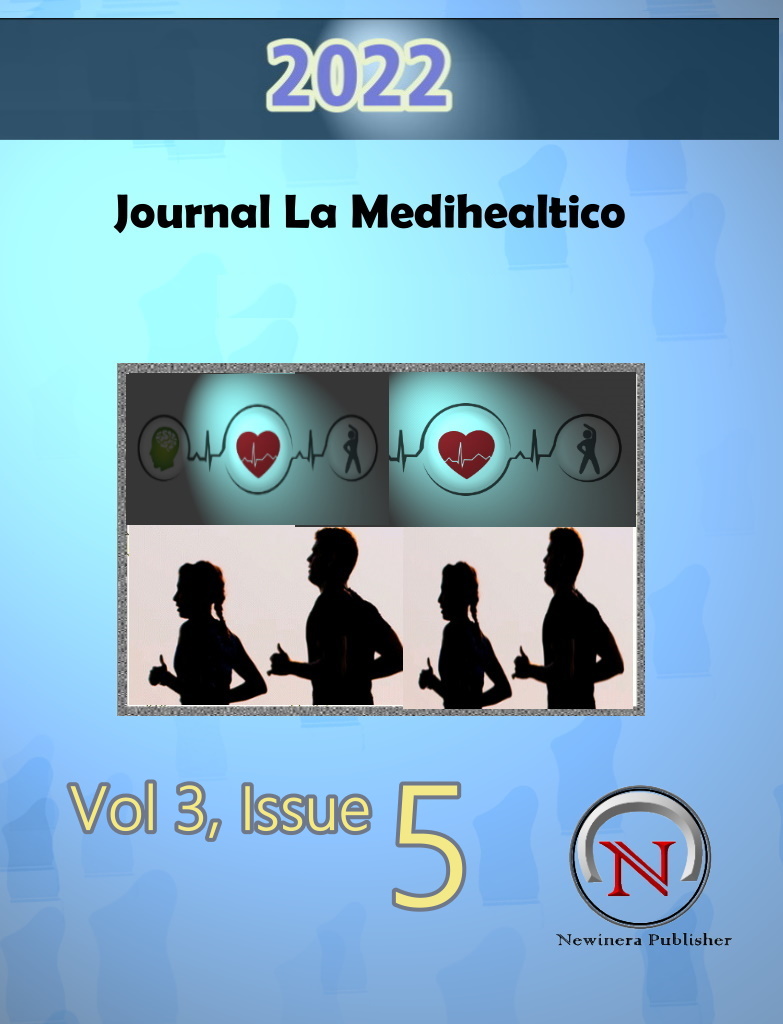Analysis of the Role of Health Integrated Post Cadres in Nutrition Services for Toddlers
Abstract
Integrated Service Post or better known as POSYANDU is a means of empowering public health because the implementation model is activated and initiated by the community in line with the needs of each community. The purpose of this study was to determine the role of cadres and barriers to Posyandu cadres in nutritional services for toddlers in Ngijo Hamlet, Karangploso Community Health Center, Malang Regency. This research uses descriptive qualitative method. There were 10 informants in this study, consisting of 4 mothers with toddlers, 4 posyandu cadres, 1 health worker and 1 posyandu chairperson. Data analysis used descriptive qualitative and the validity of the data used was data triangulation. The results showed that the cadres had not fully implemented their role in nutritional services for children under five. The obstacle experienced by cadres is the lack of knowledge of cadres about posyandu, especially about malnutrition because they do not receive training. The conclusion in this study is that the role of posyandu cadres in nutritional services for children under five in Ngijo Hamlet, Karangploso Public Health Center, Malang Regency has not been implemented optimally. It is recommended to posyandu cadres and posyandu officers to further improve the knowledge and skills of posyandu cadres, especially in terms of nutrition for toddlers and increase counseling programs to mothers about posyandu and the benefits of implementing posyandu for mothers and toddlers.
References
Determinan, S., Gizi, S., Pada, S., & Pendemi, M. (2021). Survei Status Gizi 2007 - 2020. September, 15–17.
Juliati, Badiran, M., & Aini, N. (2019). Peran Kader dalam Pelaksanaan Kegiatan Posyandu di Dusun Titipanjang Wilayah Kerja Puskesmas Bunutkabupaten Labuhanbatu Selatan Tahun 2019. Jurnal Mutiara Kesehatan Masyarakat, 4(2), 72–80.
Kemenkes RI. (2020). Rencana Aksi Kegiatan (RAK) LKTM Tahun 2020-2024. Journal of Chemical Information and Modeling, 43(1), 7728.
Kementerian Kesehatan RI. (2020). Indikator Program Kesehatan Masyarakat dalam RPJMN dan Rentra Kementerian Kesehatan 2020-2024. Katalog Dalam Terbitan. Kementerian Kesehatan RI, 1–99.
Kementerian Kesehatan RI. (2019). Panduan Orientasi Kader Posyandu. Direktorat Promosi Kesehatan Dan Pemberdayaan Masyarakat Kementrerian Kesehatan RI, 1–78.
Onthonie, H., Ismanto, Y., Onibala, F., Studi, P., Keperawatan, I., Kedokteran, F., & Samratulangi, U. (2015). Hubungan Peran Serta Kader Posyandu Dengan Status Gizi Balita Di Wilayah Kerja Puskesmas Manganitu Kabupaten Kepulauan Sangihe. 3.
Prof. Dr. Ir. Pudji Muljono, Ms. (2021). Dinamika Komunikasi Pembangunan Di Tanah Air (1st ed.). IPB Press.
RI, Kementerian Kesehatan, P. P. K. (2012). Ayo ke POSYANDU Setiap Bulan. https://doi.org/10.1159/000317898.
Statistik Pusat Badan. (n.d.). Prevalensi balita gizi kurang menurut Provinsi di Indonesia (PSG) 2016-2018.
Triyono, A., & Wibowo, Y. A. (2018). Strategi Komunikasi Pembangunan Tim Promosi Kesehatan Puskesmas Polokarto Melalui Program Desa Siaga. Jurnal Komunikasi Global, 7(1), 68–86. https://doi.org/10.24815/jkg.v7i1.10657.
Tse, A. D. P., Suprojo, A., & Adiwidjaja, I. (2017). Peran Kader Posyandu Terhadap Pembangunan Kesehatan Masyarakat. 6(1), 60–62.
Vinella Isaura. (2011). Faktor-Faktor Yang Berhubungan Dengan Kinerja Kader Posyandu Di Wilayah Kerja Puskesmas Tarusan Kecamatan Koto Xi Tarusan Kabupaten Pesisir Selatan Tahun 2011.
Zubaidi. (2013). Pengembangan Masyarakat Wacana Dan Praktik. Kencana Prenada Media
Copyright (c) 2022 Journal La Medihealtico

This work is licensed under a Creative Commons Attribution-ShareAlike 4.0 International License.









